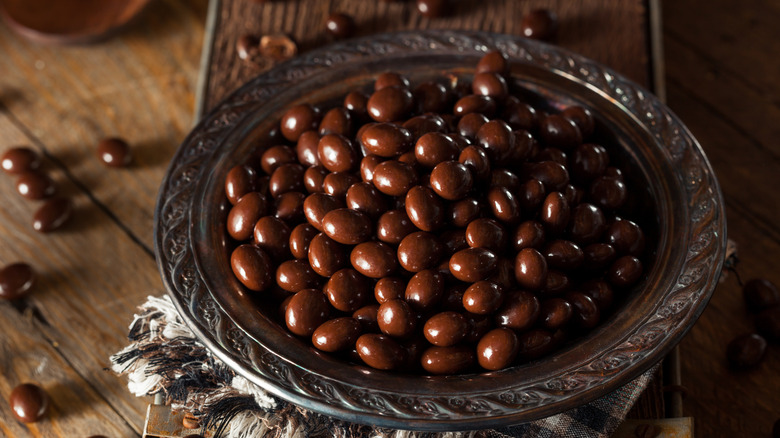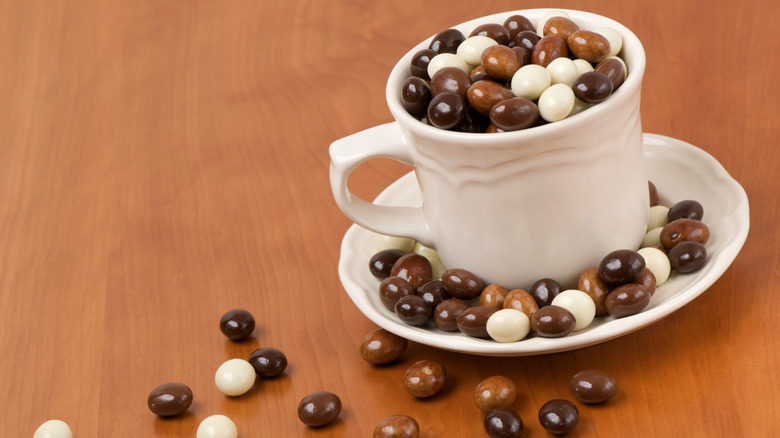The Number Of Chocolate-Covered Espresso Beans You'd Have To Eat To Equal A Cup Of Coffee
Chocolate-covered espresso beans are a tempting treat for java lovers: a bite of robust, bitter coffee bean enrobed in the tempering sweetness of chocolate. Their quick hit of caffeine without having to brew coffee is an added bonus for some who like the confections. But just how much caffeine do they have, and how many does it take to match the caffeine in a cup of coffee?
The amount of caffeine will depend on things like the type and size of the espresso beans, what kind of chocolate they're made with, and the thickness of the coating. Arabica beans are most commonly used, which have about half the caffeine of robusta beans, and a smoother, milder flavor. Dark chocolate has the most caffeine due to its higher percentage of cacao, so beans coated in it are highest in caffeine. Milk chocolate beans have less, and those with white chocolate have no added caffeine because there are no cocoa solids in white chocolate.
Now that we've laid out the variables, let's look at some numbers. According to USDA caffeine estimates, a 40-gram, 28-piece serving of dark chocolate-covered espresso beans has 336 milligrams of caffeine, or 12 milligrams each. Milk chocolate is surprisingly only a little less at 320 milligrams for 40 grams, or just over 11 milligrams each. There's no estimate for white chocolate beans, but the caffeine just from the bean will typically be 6 to 12 milligrams. At 95 milligrams for an 8-ounce cup of coffee, you'd have to eat just eight dark or milk chocolate-covered coffee beans to equal its caffeine.
Caffeine also varies with each type of coffee
We used the USDA's estimate for a standard cup of coffee, but the coffee part of this caffeine equation is actually more complicated. For instance, a single-ounce shot of espresso has 63 milligrams of caffeine, two thirds that of regular coffee's 95 milligrams for 8 ounces. Plus, coffee chains often use two espresso shots as a serving, so you'd be significantly past a standard coffee at 126 milligrams — for a lot less coffee.
The type of beans, roast and grind level, and coffee-making method all affect the amount of caffeine in a cup of coffee. Counterintuitively, dark roast coffee has less caffeine than light roast. A finer grind will produce higher-caffeine coffee because it provides more surface area for the water to reach. Brewing methods that keep the water and coffee grounds together longer raise caffeine levels, like drip-brew or using a French press. And of course, less water to coffee makes a stronger, more-caffeinated cup.
The FDA recommends no more than 400 milligrams of caffeine daily, an amount of caffeine that's okay for most people. If you're watching your caffeine intake, you might have just one cup of coffee a day, or drink decaf, and avoid the Starbucks drinks that have the most caffeine. A couple of chocolate-covered coffee beans might be okay, keeping your caffeine intake to a minimum. But like any chocolatey tidbit, once you have one, it's hard to stop!

